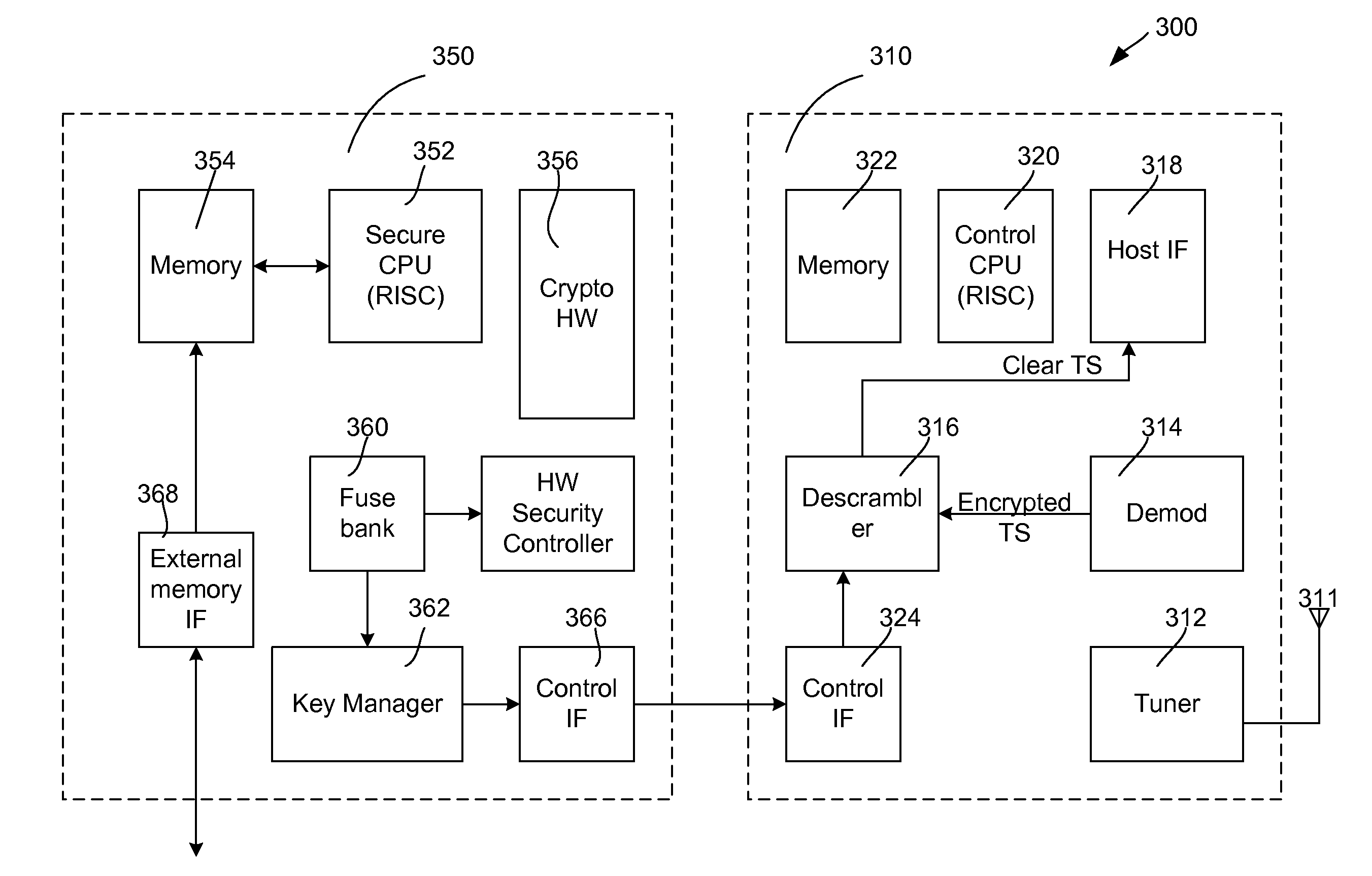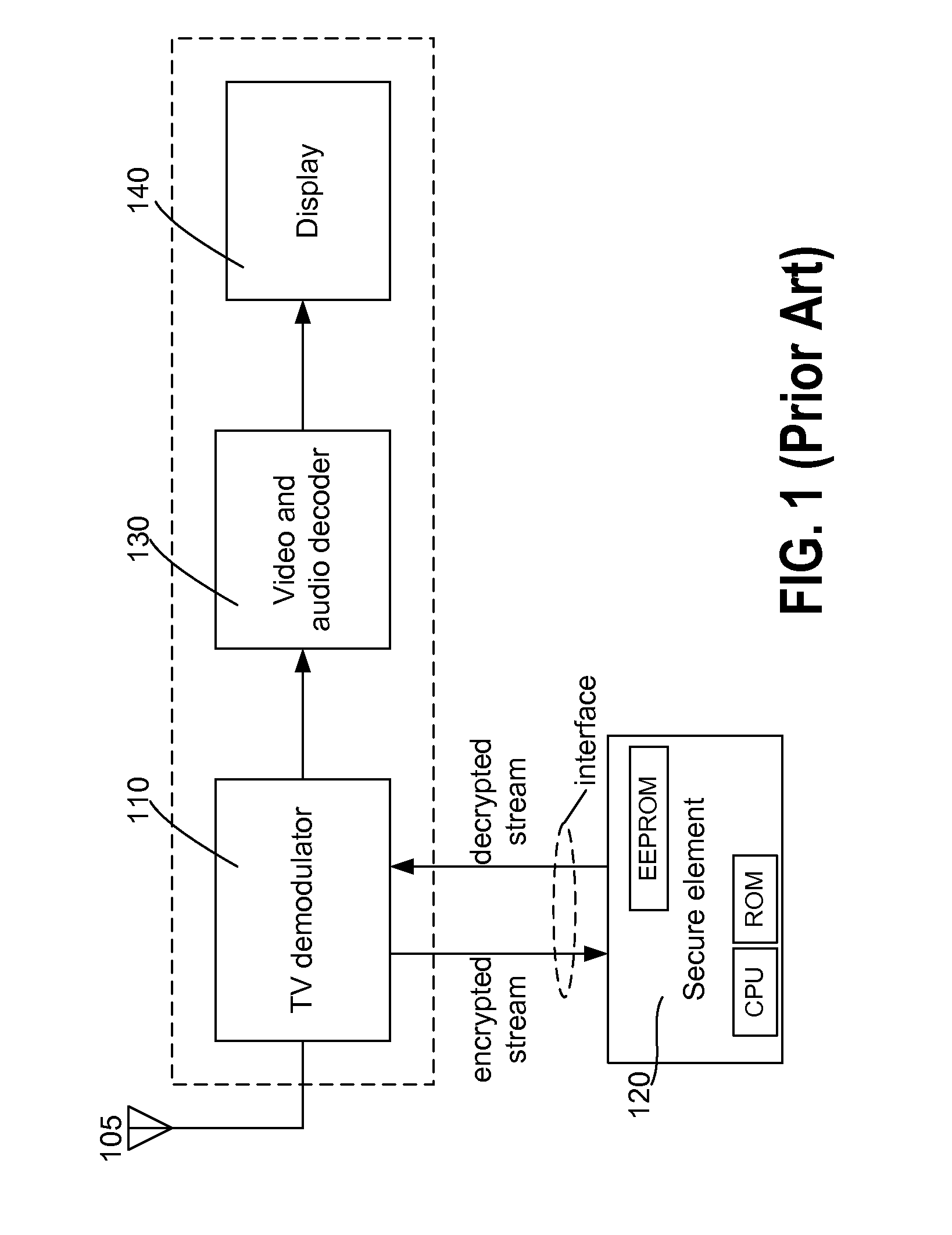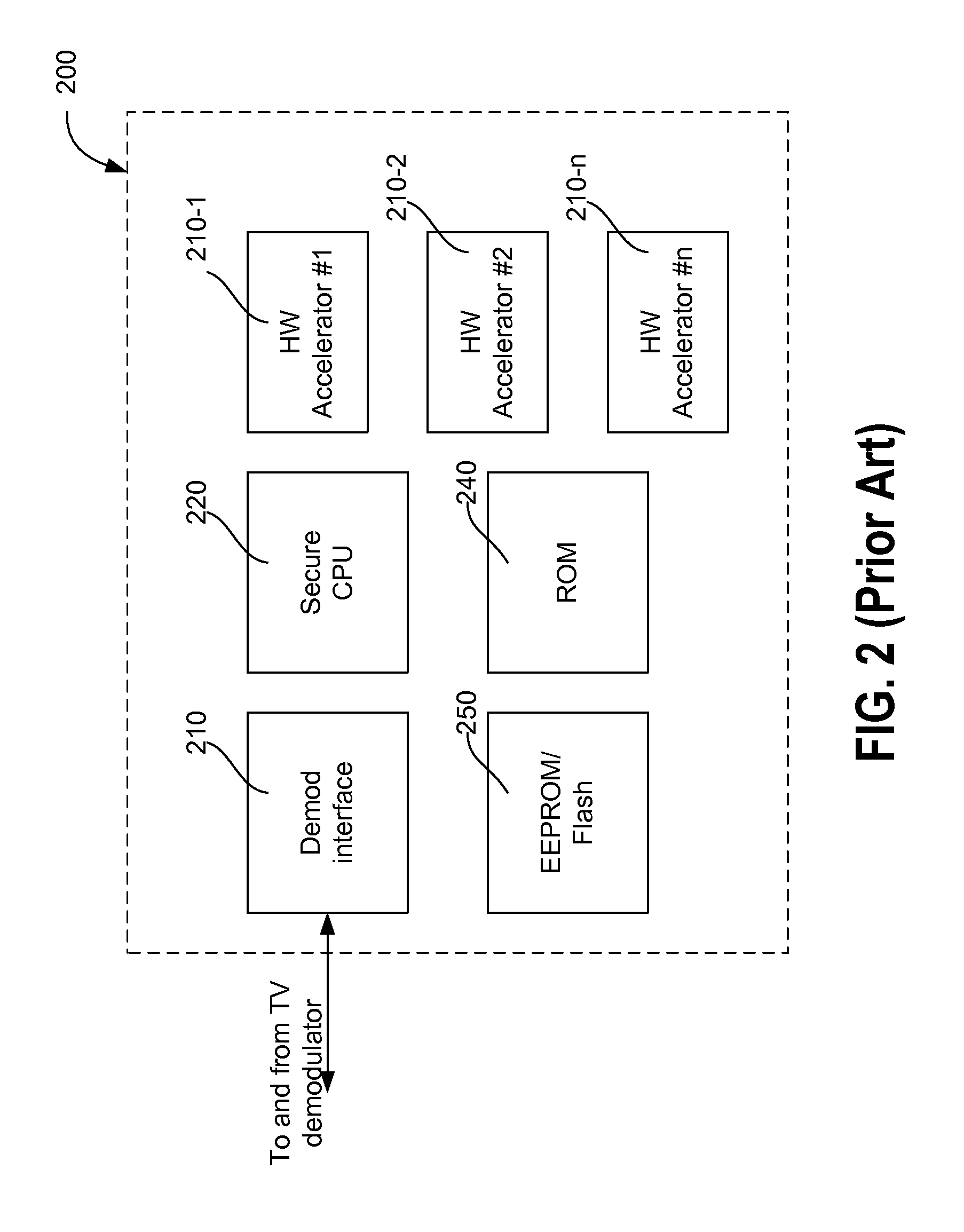RAM Based Security Element for Embedded Applications
a security element and embedded application technology, applied in the field of information processing, can solve the problems of inflexible hardware architecture, added costs to service providers, and conventional techniques that do not appear to address the concerns of service providers, ca operators, content owners,
- Summary
- Abstract
- Description
- Claims
- Application Information
AI Technical Summary
Benefits of technology
Problems solved by technology
Method used
Image
Examples
Embodiment Construction
[0022]Conditional access is used by TV broadcasters to generate revenue. To achieve this, security guidelines are used to protect the keys provisioned to the user and to guarantee that no hacker or malicious entity can crack the system and watch contents for free. These guidelines, also referred to as security requirements, define methods adapted to prevent misuse of the SOC (system-on-chip) device and its associated firmware, and furthermore to inhibit unauthorized access to secrets, such as keys, operating modes, etc. The SOC security framework described herein defines hardware (HW), software (SW), or a combination thereof to achieve these objectives.
[0023]FIG. 3 is a simplified block diagram of a receiver system on a chip (SOC) 300 configured to perform tuning, demodulating, CA security, and the like, in accordance with an embodiment of the present invention. Receiver system 300 includes a digital broadcast receiver 310 that may be capable of receiving signals in a number of diff...
PUM
 Login to View More
Login to View More Abstract
Description
Claims
Application Information
 Login to View More
Login to View More - R&D
- Intellectual Property
- Life Sciences
- Materials
- Tech Scout
- Unparalleled Data Quality
- Higher Quality Content
- 60% Fewer Hallucinations
Browse by: Latest US Patents, China's latest patents, Technical Efficacy Thesaurus, Application Domain, Technology Topic, Popular Technical Reports.
© 2025 PatSnap. All rights reserved.Legal|Privacy policy|Modern Slavery Act Transparency Statement|Sitemap|About US| Contact US: help@patsnap.com



